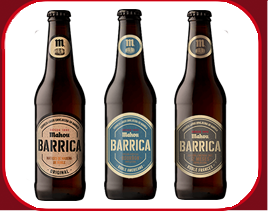The flavor of our beers
The history of our taps and our bottles
As a brand, we have truly evolved throughout our more than 125 years of history. With this interactive scroll, you can discover all of the taps and bottles that have made us who we are today: your favorite beer.

Munich, Pilsen Especial and Pilsen in the beginning
In 1890, Mahou already had three varieties of beer that were produced in the Amaniel factory: the Munich beer (black beer) with a blue label; the Pilsen (blonde) without a label and the Pilsen Especial (special blonde) with a red label. These bottles had a cork to keep the beer fresh and displayed the name of the brand to ensure there wasn’t any confusion as to their being a Mahou.
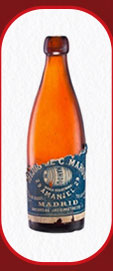
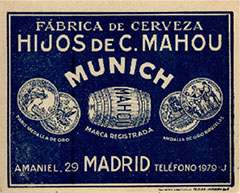

From 1900 to 1920, a small change was made to the original bottle: the design of the label changed to include the two awards given to the “Hijos de Casimiro Mahou” beer: the Paris Gold Medal of Excellence, in 1900; and the Brussels Gold Medal of Excellence, in 1987.
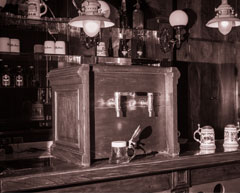
The arrival of the wooden chest
In 1890 the chest system arrives, a “wooden box” that could be placed on top of the bar in order to comfortably serve the beer when the bar had taps, and that could be placed underneath when it didn’t. Inside was a coil that acted as a conduit to pass the beer to the taps. Water, ice and salt were the elements this box contained in order to cool the beer. Interestingly enough, this system, which we held onto until 1960, cooled the beer better than the current system, however it was much more expensive.

Gibraleón bottles
These bottles were born in the Gibraleón factory (Huelva), where the sale of beer was directed at the mining communities.
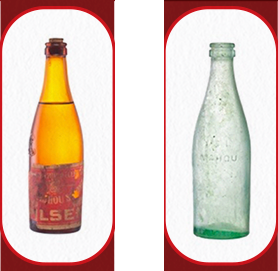

Hello, embossing
In 1930, we wave farewell to the labels and say hello to embossing. The reason for this change stemmed from the need to put an end to a bad practice where some consumers collected the bottles, removed the label and then sold them to other factories. In this way, we managed to prevent a black market from emerging for the bottles.
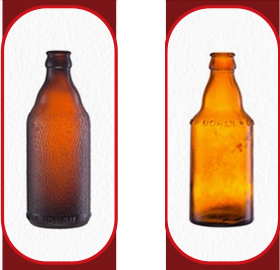
In 1936, the Steinburg bottle arrives, where we say hello to screen printing. For the Munich, Pilsen and Pilsen Especial models, the screen printing is also done color, where the red color corresponds to the Pilsen beer (blonde beer), the blue to the Munich (black beer) and the yellow to the special beer (a Pilsen beer that today is known as the “Cinco Estrellas” or Five Star beer).
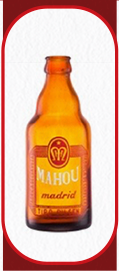

Birth of the botijo
In 1962, the botijo format was born for three varieties of beer: Munich, Pilsen Especial and Pilsen.
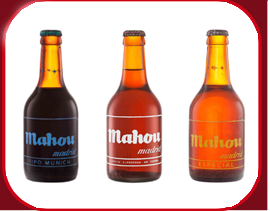
Brewing family
It’s possible that some of you may remember these three mythical Mahou bottles, released not so long ago. These were led by our beloved “litrona”, which was born in the 70s. The design is still screen printed, but this time in white.
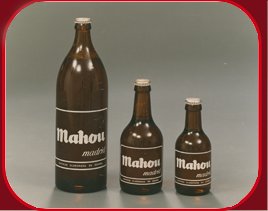
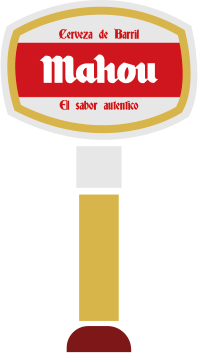
The Cornelius tap
The Cornelius is a tap that allows the pressure to be regulated when pouring the beer, and Mahou was the first brand to introduce it in Spain. It began to be installed in all Mahou establishments in 1964, two years after the inauguration of the Paseo Imperial factory.


The Ceres tap
Starting in 1967, Mahou launches a new column to achieve the perfect pouring mechanism. This mechanism, which still exists as of today and is characteristic of Mahou, consists of two movements in the tap: one of the movements allows the beer to be poured while the other makes the foam. To accompany this unique development, the tap was crowned with the figure of the Roman goddess Ceres (goddess of agriculture) holding a barrel, exemplifying the etymological root of the word “beer”: “strength of Ceres”.
The arrival of the can
Mahou continues to evolve and 1969 is a great year for change: the screen printing on the bottles disappears and the metallized label is introduced as one of the brand’s distinguishing features. The can appears as a new format and the names of several of our beers change: the “Especial” beer becomes the famous “Mahou Cinco Estrellas”, the Pilsen beer becomes “Mahou Clásica” and the Munich becomes “Cerveza Negra”.
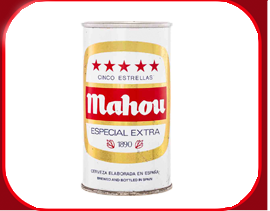

The Gayón tap
In the 70s, the brand releases another new tap, closely tied to Madrid and with a whole lot of meaning: a woman, dressed in traditional Goyesca-inspired wear with beer mugs in her hands, crowns all the new taps, a clear tribute to the painter and his style.

Styles are renewed
Mahou takes part in the La Movida Madrileña countercultural movement with three new label designs, updated to cater to the tastes of the people and the decade.


The ceramic tap
As of 1986, the tap that all parishioners would find in Mahou bars was a ceramic one; these were the first taps to introduce two movements in the handle: one to serve the beer and the other to make the foam, an important development for the Mahou pouring process. On the back of the ceramic body, the brand uses the image of a Madrid coffee shop as decoration, which is also used for coasters, television commercials and merchandising in general.

The Laiker is born
In the 90s the Laiker is born, Mahou’s non-alcoholic beer, which responds to public demand. A beer with great body and flavor, but without any alcohol.
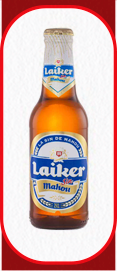

The lighter Mahou
The beginning of a new century brings with it the continuous release of new formats and products. In 2008 the Mahou light is born, a low-calorie beer with all the Mahou flavor.
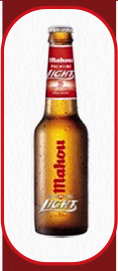

Mahou “Sin” and “Negra”
A new name for the brand’s non-alcoholic beer: from “Laiker, la sin de Mahou” to “Mahou Sin”.
One of the beers within the brand’s catalog that has stayed true to its essence is the “Mahou Negra”, in 2011 it undergoes a change of image and its premium quality is enhanced.
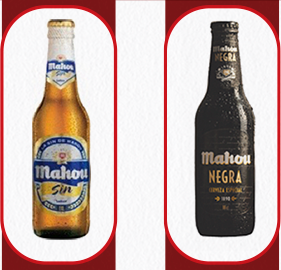
A year of change
It was time to revamp the image of the Mahou Cinco Estrellas, Mahou Clásica and Mahou Sin, looking for a more carefully made and comfortable design for the consumer with a collar that wouldn’t get in the way while drinking. The following year, 2012, is another great year for Mahou, with the release of the new easy-open bottle, saying goodbye to the crown caps and uncomfortable bottle openers.
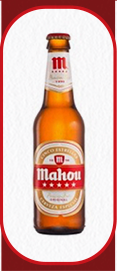
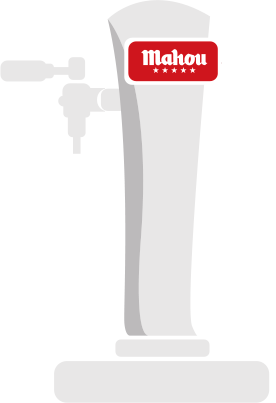
The Ávila tap
If there’s one thing we like at Mahou it’s a really cold beer, which is why this new tap improves the cooling system in the coil so that the beer comes out the way we really like it: freezing cold! In addition, the tap incorporates a new development in two positions that first allows us to serve the beer and then the foam.
And finally, gluten-free
In 2016, the incredible Mahou taste is made available to celiacs, thanks to the new Gluten-Free Mahou Cinco Estrellas.
Because we believe that everyone has the right to enjoy a good Cinco Estrellas beer. We kept its flavor, warmth and purity, but made it gluten-free.
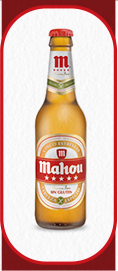
“Maestra”
In 2016, the Mahou Maestra is born, a new double-hop toasted beer produced for the most well-versed beer enthusiasts.
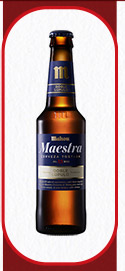

The M tap
For this new tap, the heel of the “M” in Mahou becomes the symbol of the brand in all establishments. An attractive design that disguises several unique characteristics: eco-efficiency, thanks to which the beer is kept at an optimum temperature at all times, and a direct anchor to the bar that improves the traditional and lateral systems, which are customizable and interchangeable in order to adapt to the requirements of different bars. Technology and quality at the service of the best flavor.
Mahou updates its image
As the world changes, we change with it. We decide to launch a unique bottle engraved with our iconic M and all of the character that identifies us. In addition, we renew our image while staying true to who we are.
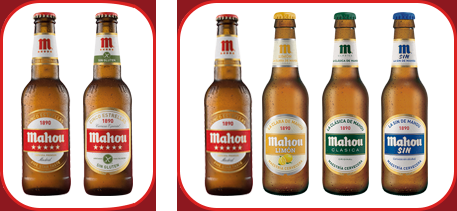
Barrica Mahou
A new way to make beer comes. Barrica Mahou is a new lager beers aged in oak barrels, the result of our Master Brewers in their continuous search to breathe new life into our berrs. The maturation of this beer in oak barrels in fundamental to bring the nuances of a unique flavor to its three varieties: Barrica Original, Barrica 12 Months and Barrica Bourbon.
